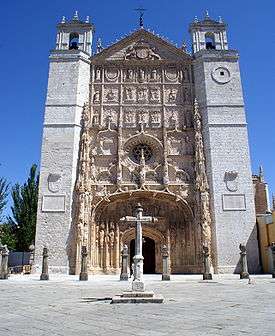Please tell us which country and city you'd like to see the weather in.
Rancho San Pablo
Rancho San Pablo was a 17,939-acre (72.60 km2) land grant in present-day Contra Costa County, California given in 1823 by Governor Luís Antonio Argüello to Francisco María Castro (1775 - 1831), a former soldier at the San Francisco Presidio and one-time alcalde of the Pueblo of San José. The grant was reconfirmed by Governor José Figueroa in 1834 to the heirs of Francisco Castro, including Víctor Castro. The San Pablo grant covered what is now Richmond, San Pablo, and Kensington in western Contra Costa County.
History
The land had previously been grazing land for cattle belonging to the Misión Dolores, but was secularized by the new Mexican republic. Francisco Maria Castro lived there with his wife María Gabriela Berreyesa and family from the late 1820s until his death in 1831. Governor of Mexican Alta California, Juan Alvarado, married one of the Castro daughters in 1839. After his term as governor was completed, they retired to her family property on Rancho San Pablo.
With the cession of California to the United States following the Mexican-American War, the 1848 Treaty of Guadalupe Hidalgo provided that the land grants would be honored. As required by the Land Act of 1851, a claim for Rancho San Pablo was filed with the Public Land Commission by Joaquín Ysidro Castro in 1852, and the grant was patented to Joaquín Ysidro Castro in 1878.
San Pablo
San Pablo (the Spanish equivalent of Saint Paul) is a common toponym in parts of the world where the Spanish language is or was spoken.
San Pablo may refer to:
Geography
Towns, cities, and counties called San Pablo:
- San Pablo (Catamarca), Catamarca Province
- San Pablo, Orange Walk, Belize
- San Pablo, Toledo, Belize
- San Pablo de Lípez, Sud Lípez Province
- San Pablo, Bolívar, a town and municipality
- San Pablo de Borbur, a town and municipality
- San Pablo, Nariño, a town and municipality
- San Pablo, Heredia Province
- San Pablo, Turrubares Canton, San José Province
- San Pablo, Leon Cortés Canton, San José Province

San Pablo (Zaragoza)
San Pablo is a church in Zaragoza, Spain. Its original Gothic-Mudéjar building dates to the late 13th/early 14th-century; later it was enlarged and modified several times.
History
The original 14th century edifice had a single nave with four bays with vaults and flying buttresses, with chapels, ending with a transept and a pentagonal apse.
In 1343 a Mudéjar tower was added, originally near the entrance, but now enclosed in the main body of the building. In the 15th century, two aisles were built.
Later, until the 18th century, several chapels were opened on the right side, the front and the back of the church.
Overview
The Gothic portal (15th century) has a varied sculptural decoration, featuring images of Saint Peter and Saint Paul on the jambs, and of Christ seated between the Virgin, Saint John and Saint Blaise on the tympanum.
The tower has an octagonal plan, and, like the church, is made in brickwork, part of which are decorated. The lower section is not visible from the exterior, as it is currently embedded within the church: it has an Arab-style frieze. The upper floors have Mudéjar-style decorations, mullioned windows and small arcades. At the top is a pyramidal spire.

Church of San Pablo, Valladolid
The Church of San Pablo, or San Pablo de Valladolid is an Isabelline Gothic-Plateresque church in Valladolid, in western Spain, built by Cardinal Juan de Torquemada between 1445 and 1468. Kings Philip II and Philip IV of Spain were baptized in the church. Is one of the most representative building of the city.
History
The church construction was commissioned by Cardinal Torquemada to replace a previous church, which had a timber ceiling and was annexed to a Dominican convent, founded in 1270. After Torquemada's death, bishop Alonso de Burgos funded the building of the cloister, refectory, and lower façade, as well as of the adjacent Colegio de San Gregorio with its funerary chapel. Artists who worked to the church in this period include the Spanish-Flemish Juan Guas and Simón de Colonia. Around 1550, Cardinal Juan Garcia Loaysa, confessor of Charles V, built the sacristy, covered with a dome decorated by stars, coat of arms of the order and figures of Dominican saints. The nave features rib vaults, supported by corbels in Renaissance style, added around 1540.
Radio Stations - Rancho San Pablo
SEARCH FOR RADIOS
Podcasts:

